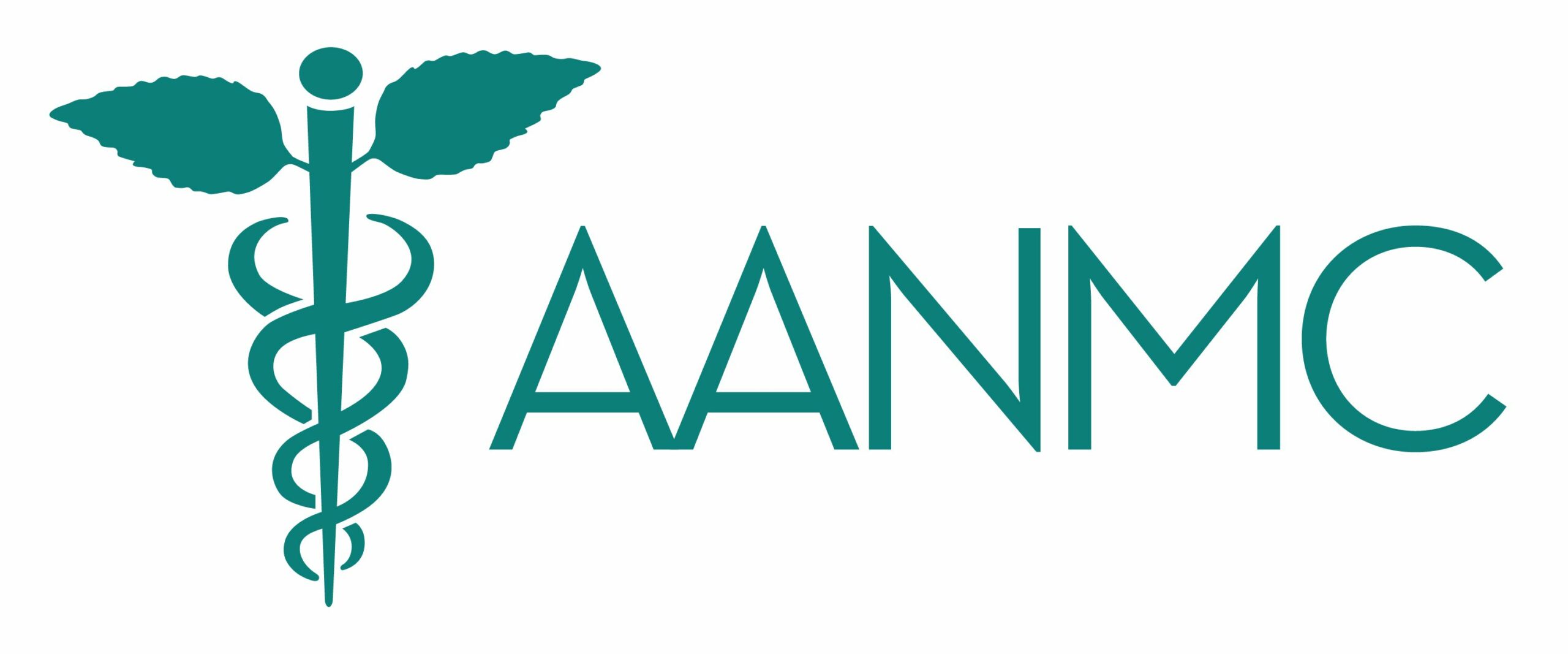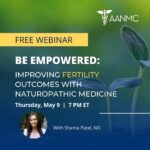(January 2012) — One of the most compelling stories of year 2011 was the Fukushima earthquake-tsunami-nuclear meltdown disaster and its threatening aftereffects. An increase in genetically modified organism (GMO) approvals, proof of contamination in apple and grape juice, confirmation of a prescription drug overdose epidemic, and a threat to nutritional supplement availability added to the distress felt by many in the world of complementary and alternative medicine (CAM).
Our top 10 CAM news stories of 2011 reflect these concerns, and also cover the positive developments that may have dropped off the radar, upstaged by all the bad news: Efforts to look more deeply into the rise in CAM use; study upon study providing scientific validation of natural medicine; and federal regulations, funding and public relations efforts in support of disease prevention also caught our attention in 2011.
1. Rise in CAM use explained and embraced
2. Scientific validation of CAM therapies mounting
3. Tighter environmental regulations follow nuclear power disaster
4. Food as medicine – or toxin?
5. Safer alternatives to pharmaceutical drugs a public safety imperative
6. Nutritional supplements facing new federal restrictions
7. New book explores integrative cancer treatments around the world
8. North Dakota licenses NDs, other states increase scope
9. Federal policy measures promote disease prevention
10. CAM practitioners appointed and honored
Rise in CAM use explained and embraced
In 2011, researchers and health care providers identified several reasons for the 14 percent increase in the use of CAM between 2002 and 2007.
Less expensive alternative: One-third of CAM users had an unmet medical need or had delayed seeking medical care due to cost, says a study in the Journal of Health Care for the Poor and Underserved.
Shortage of professional medical skills internationally: Zimbabweans are making a return to traditional medicine; nearly 80 percent of the developing world’s population depends on tradition medicine to meet their primary health care needs.
Seeking empowerment: In the Huffington Post, Dr. Nalini Chilkov wrote that 80 percent of cancer patients now use integrative medicine because they are seeking empowerment and involvementin their recovery.
Safety: A September Consumer Reports survey found that 75 percent of online subscribers use some form of CAM, citing safety among other reasons.
Enhanced quality of life: While nearly 40 percent of Americans use CAM, more than 40 percent ofU.S. hospices offer CAM services that are found to enhance quality of life, such as meditation and pet therapy. As a result of the increase in CAM use, a growing number of conventional medical schools now offer elective instruction in CAM.
2. Scientific validation of CAM therapies mounting
Stressed? A Georgetown University study has found that acupuncture reduces levels of the fight-or-flight protein neuropeptide Y (NPY) in mice. If researchers can duplicate the findings in humans, they will have molecular evidence of acupuncture’s protective effect against human stress.
Forgetful? A National Institute of Health (NIH) study has demonstrated that the PC6 acupuncture point is effective in restoring chronic, mild stress-related biochemical and behavioral impairments, such as learning and memory.
Unexplained pain? Researchers at the Institute of Health Services Research, Peninsula Medical School, at the University of Exeterprescribed acupuncture for patients suffering from aches and pains otherwise unexplainable by their doctors. Published in The British Journal of General Practice, the study found that after 26 weeks of therapy, patients treated with acupuncture felt significantly better than those who did not receive the treatment.
Fatigued due to cancer? A UCLA Center for East-West Medicine study found acupuncture, along with naturopathic therapies such as nutrition, exercise and relaxation – to reduce fatigue in cancer patients by 66 percent. And new research from NIH’s National Center for Complementary and Alternative Medicine (NCCAM) suggests that yoga, too, may help breast cancer survivors to better deal with persistent fatigue. The impact of fatigue on recovery rates and quality of life for cancer patients can be significant.
This growing body of scientific evidence supporting acupuncture’s effectiveness is likely to further energize the modality’s acceptance by Western society.
3. Tighter environmental regulations follow nuclear power disaster
The March 2011 nuclear disaster in Fukushima, Japan, reignited debate over the safety of nuclear power. A ban on the sale of food grown in the Fukushima area weighs heavily on local residents, as does the looming threat of as many as 1,000 projected future cancer deaths due to accumulated radiation exposures. Concerns that this radiation could migrate overseas has led many North Americans to seek out natural protections against radiation exposure.
New standards from the U.S. Environmental Protection Agency (EPA) followed in December – standards that greatly reduce the permissible levels of mercury, arsenic, chromium, nickel, acid gases and other toxins produced by coal-burning power plants. The EPA’s Mercury and Air Toxics Standards (MATS) for power plants will, for the first time ever, place limits on these pollutants. MATS will prevent 90 percent of mercury, 88 percent of acid gas and 41 percent of sulfur dioxide emissions from coal burned in power plants from being released into the atmosphere. The EPA estimates that these new standards will avert as many as 11,000 premature deaths, 4,700 heart attacks and 130,000 asthma attacks.
Still, the Pandora’s Box of environmental toxins remains open and may cause or contribute to many illnesses. In response, naturopathic physicians offer a range of treatments to aid the body in cleansing itself of these environmental toxins and restoring pH balance. Naturopathic detoxification treatments include alkaline teas and bath salts, infrared saunas, hydrotherapy, alkalinizing machines, homeopathic remedies and oral and intravenous supplements.
4. Food as medicine – or toxin?
In January, the U.S. Department of Agriculture (USDA) deregulated Monsanto’s genetically modified, weedkiller-resistant alfalfa, overruling organic farmers’ concerns about contamination through cross-pollination. In April, the USDA began accelerating the approval process of GMO crops. The anti-GMO movement then gained momentum with an October march from New York to the White House. Documenting the numerous health risks associated with GMO foods — from allergies to organ damage — bestselling author and consumer advocate Jeffrey Smith presented on the topic at the American Association of Naturopathic Physicians’ (AANP’s) annual conference. A Wiki-How article on avoiding GMOs reflects the growing and controversial concern.
In September, Dr. Mehmet Oz reported on his television show that he had discovered high levels of arsenic and lead in apple juice. Two months later, Consumer Reports reported finding high levels of the same toxins in many varieties of apple and grape juice. Between the two studies, almost all juice brands were found to contain levels of arsenic and lead higher than the U.S. Food and Drug Administration (FDA) standard for bottled water. Repeated low-level exposure to arsenic has been linked to skin, lung and bladder cancers.
And the toxicity is not limited to food supply; food containers are also a growing concern. Bisphenol A (BPA), a toxin that can leach from baby bottles, reusable plastic bottles, aluminum cans and other containers, has been found in human placentas, fetuses and breast milk.In 2011, newborn mice exposed to BPA were shown to adapt less successfully to new environments and to demonstrate hyperactivity as young adults.Researchers say that other environmental toxins, such as flame retardants, may work with BPA to further hinder brain development, meaning that any individual toxin dosage limit might be insufficient. The FDA has declined to deem BPA unsafe, and so consumers must do their best to make educated choices. Certified BPA-free containers are likely to be free of BPA, but not necessarily of other undisclosed toxins.
How about a study on the effects of drinking arsenic- and lead-laced, GMO-derived apple juice from BPA-leaching baby bottles?
5. Safer alternatives to pharmaceutical drugs a public safety imperative
The U.S. Centers for Disease Control and Prevention (CDC) reported in November that nearly 100,000 emergency hospitalizations of elderly patients each year are linked to adverse prescription drug events such as allergic reactions and unintentional overdoses; the study identified four medications responsible for two-thirds of these emergency room visits. (The CDEestimates 700,000 total emergency room visits are due to adverse drug events every year.) The CDC also sounded an alarm about epidemic levels of painkiller overdoses, reporting that more than 40 people die every day from overdoses involving narcotic painkillers like Vicodin and OxyContin — more deaths than caused by heroin and cocaine combined. In related pharmaceutical news, a study of more than one million women by The Journal of the National Cancer Institute found that menopause hormone therapy medications increased breast cancer risks in even younger women.
What’s the solution? In response to the alarming level of drug reactions and overdoses, the Drug Enforcement Administration (DEA) has developed an action plan that includes education, environmentally responsible medication disposal methods, state-run prescription drug monitoring databases, and law enforcement efforts to crack down on pill mills and doctor shopping. Naturopathic alternatives also can provide safe and effective solutions: For example, close to half of Ontarians treated by naturopathic doctors (NDs) in 2011 reported that naturopathic medicine has helped reduce their use of prescription drugs; and many patients also reported fewer visits to their family doctors and hospitals as a result of the care they received from NDs. And in Arizona, Decker Weiss, ND, reports that in his 13 years of practice as the nation’s only naturopathic cardiologist, not a single patient of his has developed congestive heart failure. Weiss’s non-pharmaceutical treatment regimen addresses inflammation, the culprit in the oxidation of heart disease-accelerating LDL cholesterol.
6. Nutritional supplements facing new federal restrictions
The CDC reported in April that more than half of Americans now use supplements, but new federal guidelines could have an impact on their manufacturing and availability. In July, the FDA issued draft guidelines for compliance with the New Dietary Ingredient notification protocols; the guidelines direct companies and individuals wishing to sell or develop a supplement containing new ingredients (i.e., ingredients added to the FDA’s list after 1994) to notify the FDA of their intent. If the FDA deems the ingredient unsafe or unscientific, the supplement could be prohibited. Nutrition Business Journal reports that the regulatory move could potentially have an adverse impact on up to 70 percent of supplement products now in the marketplace. And now in a bipartisan effort, two U.S. senators have requested that the FDA redraft the guidelines to better protect consumer access to safe, affordable dietary supplements. Also in 2011, the FDA filed itsfirst permanent injunction against a manufacturer over adulterated supplements.
In other supplement news, vitamin D deficiency was shown to alter lung structure and function, helping explain its links to asthma and chronic obstructive pulmonary disease (COPD); vitamin E and essential fatty acids (found in evening primrose, borage, black currant seed and olive oils) were found to reduce pre-menstrual syndrome (PMS) symptoms; vitamin E supplements were found to increase incidence of prostate cancer, but not when taken with selenium, for which there is, as yet, no apparent biological explanation; and the AANP responded to astudy linking dietary supplement use to mortality in older women, urging consultation with a health care professional trained in herb-drug and herb-nutrient interactions.
7. New book explores integrative cancer treatments around the world
Health care journalist Connie Strasheim interviewed 15 oncologists from five different countries to write Defeat Cancer: Fifteen Doctors of Integrative and Naturopathic Medicine Tell You How.
Colleen Huber, ND, from Tempe, Ariz., explains the seven events that must take place in the body before cancer can occur, and shares the solutions she uses in her practice to reverse these cancer-causing events.
Joe Brown, ND, also from Tempe, had been diagnosed with stage-three/four melanoma. After extensive conventional therapy, doctors told him that he only had three or four weeks to live. He sought naturopathic and integrative treatments (e.g., nutrition, supplements and exercise), which he says have kept his cancer in remission for more than 14 years. This life-changing experience then propelled Brown to become an ND.
And Chad Aschtgen, ND, from Seattle, Wash., provides supportive treatments to patients who are also receiving conventional oncology treatments, such as chemotherapy, radiation and surgery. He explains that while surgery can successfully eradicate tumors, integrative care is needed to change the underlying factors that caused the cancer, and to discourage ongoing tumor cell activity.
The AANP’s website includes a comprehensive booklist – all authored by naturopaths.
8. North Dakota licenses NDs, other states increase scope
In 2011 North Dakota became the 16th state to license naturopathic doctors. And Arizona, California, Utah and Washington State all passed legislative changes that effectively increased the scope of practice for naturopathic physicians. View state progress reports from March andMay 2011.
9. Federal policy measures promote disease prevention
The MyPlate nutrition icon replaced the more complicated USDA Food Pyramid in June. With vegetables making up the largest portion, the healthful eating symbol helps people visualize, on a realistic-looking plate, just how much to eat from each basic food group. Along with the agriculture secretary and surgeon general, First Lady Michelle Obama unveiled the new icon as part of her ongoing public education campaign against obesity, a leading risk factor for heart disease, high blood pressure, diabetes and many other diseases which are commonly and successfully treated by NDs.
In November, the U.S. Department of Health and Human Services issued a request for proposals for the Health Care Innovation Challenge. This initiative, made possible by the Affordable Care Act (Obamacare), will provide up to $1 billion in individual grants of $1-30 million to local communities that put forth innovative means of providing federally insured individuals with chronic disease preventative care, integrated care and lower health care costs. Grants will be awarded in March 2012.
10. CAM practitioners appointed and honored
In November, President Obama appointed Janet Kahn, PhD, to the Advisory Group on Prevention, Health Promotion, and Integrative and Public Health, a key health care reform panel chaired by the surgeon general. A medical sociologist and massage therapist, Dr. Kahn recently served as executive director of the Integrated Healthcare Policy Consortium.
The AANP named Shiva Barton, ND, LAc,its Physician of the Year. Dr. Barton graduated from Bastyr University in 1983 and has been practicing naturopathic medicine and acupuncture in the Boston, Mass., area for more than 25 years. He treats adults and children who have acute or chronic conditions, or unusual conditions that have been difficult to diagnose and/or treat with other modalities. Dr. Barton was recognized for his contributions to clinical practice and student education, lecturing at the national conference for 17 years, and helping to navigate the naturopathic licensing bill through the Massachusetts Legislature.
The AANP also awarded Bastyr University ND student Josh Goldenberg the Excellence in Student Research award – the first student award ever to be presented at the AANP conference.
While this collection of ten stories does not represent an all-inclusive list of 2011 CAM developments, it does highlight enough of the year’s major events and advances to demonstrate humanity’s overwhelming desire to heal the planet. As this desire ‒ this need ‒ continues to grow among the public, naturopathic physicians will continue to be sought out and recognized as North America’s most qualified experts on all types of safe and effective CAM care. By addressing the root cause of illnesses, NDs serve to prevent long-term, chronic disease later in life. Discover more about today’s naturopathic doctors.
For more information on health care advancements this year, read Time magazine’s 2011 report:Top 10 Medical Breakthroughs. For a more policy-focused report, read John Weeks’ Top 10 for Integrative Medicine Policy and Action. And for the academic news highlights of year 2011, readNaturopathic Medical Schools – Milestones 2011.
Patty Bates-Ballard is the owner of WordSmooth, an inclusive communications company. Mother of two and co-author of the bookNavigating Diversity, she is an advocate of respect for the earth and its people. Patty has written extensively on diversity, ecology, wellness and politics for a range of publications, including Environmental News Network and Environmental Design + Constructionmagazine.







